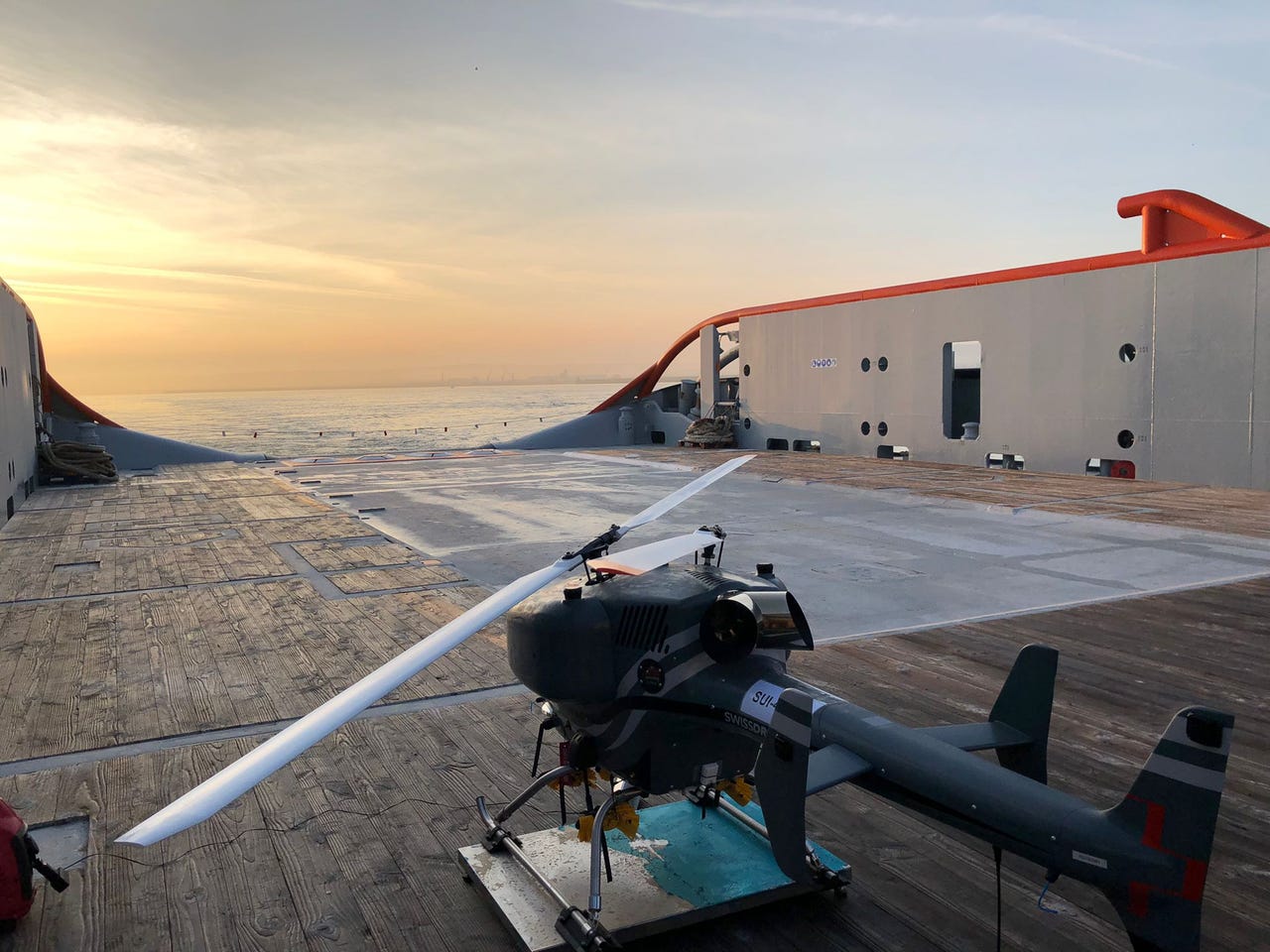Pirate-hunting drone monitors crime on the high seas


The ocean is a lawless frontier. Anyone who follows Ian Urbina's excellent series knows that crime abounds on the high seas and often goes unpunished.
The factors contributing to lawlessness are complex and difficult to parse, but one issue is strictly logistical. The ocean is big and dangerous and it's not an easy place to monitor. Two UAV technology companies are joining forces to demonstrate that drones can be part of the solution.
SwissDrones, a company that develops, manufactures and operates long-range unmanned helicopter systems for commercial and public safety applications, and CLS, which specializes in satellite-based monitoring and surveillance, recently completed a demonstration in the open ocean utilizing a SwissDrones unmanned helicopter. The helicopter was launched from aboard the Bourbon Offshore ship Argonaute to demonstrate how Remotely Piloted Aircraft Systems (RPAS) can complete Earth Observation Systems and serve as complementary tools in the overall surveillance chain for monitoring oceans over extended periods and across large areas.
Also read: Watch these autonomous drones zip through the woods
"Drones are a complementary asset in the overall surveillance process," says Ulrich Amberg, CEO of SwissDrones. "They enhance maritime situational awareness with additional sources of data and make operations safer for coastal authorities during hazardous conditions."
The applications for such a chain of surveillance and monitoring could include search and rescue, pollution monitoring, and monitoring for traffickers and pirates. The drone itself, SDO 50 VTOL, is a robust helicopter with two intermeshing blades with opposing rotations. The platform enables long-range missions in adverse weather conditions, as well as relatively high payload capacity (45 kg/99 lbs, including fuel). Much smaller and cheaper than a manned helicopter, the UAV can be launched from a ship and autonomously run patterns in wide perimeters without risking the lives of onboard crew.
The demonstration combined the in-the-air surveillance with a mesh of satellite surveillance to give decision makers on the ground a robust set of data for decision making.
"CLS has been an expert in the field of maritime surveillance and security for more than 30 years, with no less than 400 satellites available to support national sovereignty and security at sea. CLS's collaboration with SwissDrones adds a further stone to the decision-making tool available to maritime authorities. With this new UAV, we complete the arsenal of safety at sea that we offer. We are very happy to collaborate with Swissdrones. Together, we ensure the reliability of our operations, which is a guarantee for the future." says Nadia Maaref, Director of Maritime Security at CLS.
The question, of course, is whether adoption of such a system, even given its cost efficiencies compared to manned surveillance, is practical or likely in countries that have been ineffective thus far at monitoring their oceans. As Urbina frequently points out in his writing, much of the problem of lawlessness at sea comes down to an unwillingness of governments to engage in law enforcement nearshore and offshore. As is frequently the case, technological development can at best be a partial solution in a complicated global problem.